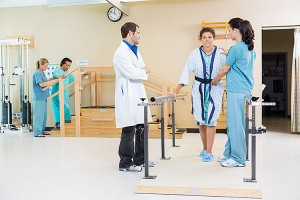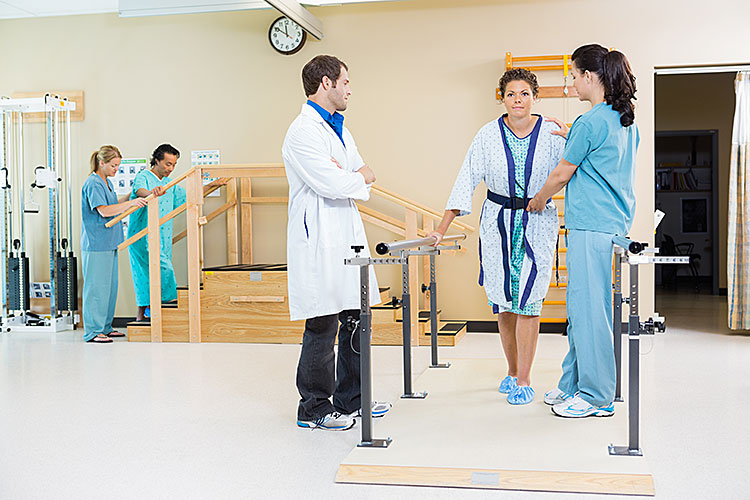 As I look at the state of the profession it puzzles me that more PTs are not pursuing specialization in areas that are both professionally stimulating and financially rewarding.
As I look at the state of the profession it puzzles me that more PTs are not pursuing specialization in areas that are both professionally stimulating and financially rewarding.
PTs try many ways to enhance the skills and tools used in clinical practice. Many choices exist for therapeutic and diagnostic skills if one wishes to pursue and master them. The time spent in doctorate entry level training covers many but not all possibilities for eventual decisions to enhance ones scope of practice. But, it seems PTs are slipping when it comes to the opportunity for practice innovation in the area of electrodiagnostic tests, (EMG, NCV….)
Since the 50’s PTs have been trained and use principles of electrical properties in daily practice. PTs traditionally apply electrical principles in treatment of neuromuscular disorders. All areas of PT but especially modality driven practices have clearly seen a declining valuation. It is clear payers regard the application of electrical treatment modalities commensurate with passive or unattended service and as such justify cuts in reimbursement. Although we still treat patients using these modalities interest in electrical treatment procedures has waned among the PT community.
In the general medical community however, Electrical Testing of the neuromuscular systems has seen dramatic growth over this time. But in PT we have not seen any significant interest in this area of practice. Why in the world would that be? Have we forgotten that our training also includes testing with electrical principles? Well is it true most PTs focus on treatment modalities but fail to see the opportunity to use their knowledge and training in electrical tools as a “testing” modality. Fortunately these testing opportunities are still in high demand and reimburse very well compared to treatment modalities, even after a recent sharp reductions in reimbursement.
Elctrodiagnostic testing or EDX is used to evaluate nerve and muscle disorders and has been a part of PT practice since the 50’s. Originating in classical forms like chronaxie and strength duration tests traditional EDX today consist of two separate tests nct and emg. Basically NCT assesses nerve conduction speed in response to electrical stimulation and EMG records electrical activity from a muscle. NCT are done with surface electrodes and EMG utilizes a small needle electrode. These tests help clinicians to diagnose entities ranging from focal nerve compression like carpal tunnel syndrome to radiculopathy and such disorders as myopathy and diabetic neuropathy.
Today, although PTs have training in principles underlying electrical tests the EDX field is dominated by the neurology and PMR disciplines. PT’s focus on treatment and diagnostic testing has been the purview of “doctors” .But why? To me the answer is clear – “money” – as reimbursements for EDX escalated in the 70;s and 80’s almost overnight arbitrary lines were drawn in the sand by the medical community to define EDX as the practice of medicine. Historically dependent upon the medical community PT’s have tended to acquiesce to these arbitrary practice boundaries.
But over time the profession has progressively ‘pushed back’ against the medical establishment defending therapists’ right to practice EDX. Today’s climate for PT practices is transforming. The economic pressures on private PT practices are pushing them close to extinction. In spite the obvious challenges therapists in private practice need to explore opportunities for growth and sustainability.
John Palazzo PT, DSC, ECS- EMG Specialist
Latest posts by John Palazzo PT, DSC, ECS- EMG Specialist (see all)
- PTs and Practice Opportunities - July 9, 2014


Comments
Looking at EDX (EMG specifically) by state, and seeing that EMG laws vary by state. In my state of PA, a PT can perform an EMG only with the referral from a MD/DO, and the PT is not able to make any diagnosis from the EMG. They can only report the findings to the MD/DO.
Also, the AANEM (American Association of Neuromuscular and Electrodiagnostic Medicine) takes the stance that all EDX should only be performed by physicians who have comprehensive knowledge of neurological and musculoskeletal disorders to assure accurate interpretation and diagnosis, and provide patients with quality care. So basically it looks like there is a little controversy on the whole EDX thing.
I would be interested in hearing any first hand experience on reimbursement for EMG studies completed by PT’s. I am considering beginning residency for the ECS specialty. The residency program website states bilateral studies reimburse between $325-$425 however I found on the APTA website a 2013 review that found PT’s were reimbursed an average of $84 for a study a MD/DO would get $500.00 for.
Which stance is accurate in practice? The $84/study or the $325+/study.
Thanks!